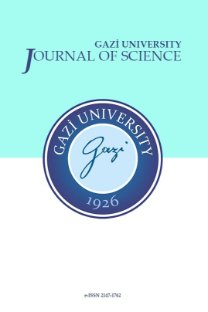A Comparative Study on Denoising from Facial Images Using Convolutional Autoencoder
A Comparative Study on Denoising from Facial Images Using Convolutional Autoencoder
Denoising, Autoencoder Salt&pepper noise, Gaussian noise,
___
- [1] Fan, L., Zhang, F., Fan, H. and Zhang, C., “Brief review of image denoising techniques,” Visual Computing for Industry, Biomedicine, and Art, 7, (2019).
- [2] Alisha P. B. and G. S. K., “Image Denoising Techniques-An Overview,” 11: 78–84, (2016).
- [3] Patidar, P., Gupta, M., Srivastava, S. and Nagawat, A. K., “Image De-noising by Various Filters for Different Noise,” International Journal of Computer Applications, 9: 45–50, (2010).
- [4] Tun, N. M., Gavrilov, A. I. and Tun, N. L., “Facial image denoising using convolutional autoencoder network,” Proceedings - 2020 International Conference on Industrial Engineering, Applications and Manufacturing, ICIEAM 2020, 1–5, (2020).
- [5] Bajaj, K., Singh, D. K. and Ansari, M. A., “Autoencoders Based Deep Learner for Image Denoising,” Procedia Computer Science, 171: 1535–1541, (2020).
- [6] Nishio, M., “Convolutional auto-encoders for image denoising of ultra-low-dose CT,” Heliyon, 3, (2017).
- [7] Çetinkaya, E. and Kiraç, M. F., “Image denoising using deep convolutional autoencoder with feature pyramids,” Turkish Journal of Electrical Engineering and Computer Sciences, 28: 2096–2109, (2020).
- [8] Kumar, A. and Sodhi, S. S., “Comparative Analysis of Gaussian Filter, Median Filter and Denoise Autoencoder,” in Proceedings of the 29 th International Conference on Machine Learning, 1627–1634, (2012).
- [9] Gondara, L., “Medical Image Denoising Using Convolutional Denoising Autoencoders,” IEEE International Conference on Data Mining Workshops, ICDMW, 241–246, (2016).
- [10] Zilvan, V., Ramdan, A., Suryawati, E., Kusumo, R. B. S., Krisnandi, D. and Pardede, H. F., “Denoising Convolutional Variational Autoencoders-Based Feature Learning for Automatic Detection of Plant Diseases,” ICICOS 2019 - 3rd International Conference on Informatics and Computational Sciences: Accelerating Informatics and Computational Research for Smarter Society in The Era of Industry 4.0, Proceedings, 0–5, (2019).
- [11] Mohandas, A., Joseph, S. M. and Sathidevi, P. S., “An Autoencoder based Technique for DNA Microarray Image Denoising,” Proceedings of the 2020 IEEE International Conference on Communication and Signal Processing, ICCSP 2020, 1366–1371, (2020).
- [12] Lee, D., Choi, S. and Kim, H. J., “Performance evaluation of image denoising developed using convolutional denoising autoencoders in chest radiography,” Nuclear Instruments and Methods in Physics Research, Section A: Accelerators, Spectrometers, Detectors and Associated Equipment, 884: 97–104, (2018).
- [13] Hambal, A. M., Pei, Z. and Libent Ishabailu, F., “Image Noise Reduction and Filtering Techniques,” International Journal of Science and Research, 6: 2319–7064, (2015).
- [14] D’Angelo, G. and Palmieri, F., “Network traffic classification using deep convolutional recurrent autoencoder neural networks for spatial–temporal features extraction,” Journal of Network and Computer Applications, 173, (2021).
- [15] Attia, A. and Chaa, M., “Individual Recognition System using Deep network based on Face Regions,” International Journal of Applied Mathematics Electronics and Computers, 6: 27–32, (2018).
- [16] Darici, M. B., Dokur, Z. and Olmez, T., “Pneumonia Detection and Classification Using Deep Learning on Chest X-Ray Images,” International Journal of Intelligent Systems and Applications in Engineering, 8: 177–183, (2020).
- [17] Adweb, K. M. A., Cavus, N. and Sekeroglu, B., “Cervical Cancer Diagnosis Using Very Deep Networks over Different Activation Functions,” IEEE Access, 9: 46612–46625, (2021).
- [18] Xu, B., Wang, N., Chen, T. and Li, M., “Empirical Evaluation of Rectified Activations in Convolutional Network,”, [Online]. Available: http://arxiv.org/abs/1505.00853 (2015).
- [19] Yaqub, M., Feng, J., Zia, M., Arshid, K., Jia, K. and Rehman, Z., “State-of-the-art CNN optimizer for brain tumor segmentation in magnetic resonance images,” Brain Sciences, 10: 1–19, (2020).
- [20] Ebrahimnejad, J. and Naghsh, A., “Removal of High-Density Salt-and-pepper Noise for Robust ROI Detection Used in Watermarking of MRI Images of the Brain,” Computers in Biology and Medicine, 137: 104831, (2021).
- [21] Chen, M., Xu, Z., Weinberger, K. Q. and Sha, F., “Marginalized denoising autoencoders for domain adaptation,” Proceedings of the 29th International Conference on Machine Learning, ICML 2012, 1: 767–774, (2012).
- Yayın Aralığı: 4
- Başlangıç: 1988
- Yayıncı: Gazi Üniversitesi, Fen Bilimleri Enstitüsü
Integral Fuzzy Sliding Mode Controller for Hydraulic System Using Neural Network Modelling
Ayça AK, Erdal YILMAZ, Sevan KATRANCIOĞLU
Sertac Samed SEYITOGLU, Ömer Faruk TOZLU, Emir AVCIOĞLU
Prioritizing Individuals Who Will Have Covid-19 Vaccine with Multi-Criteria Decision Making Methods
Emre YAZICI, Sabire İrem ÜNER, Aslı DEMİR, Sevda DİNLER, Hacı Mehmet ALAKAŞ
Ali ARSLANTAS, Mehmet Salih AĞIRTAŞ
Serhat KARYEYEN, Mustafa AKTAŞ, Alperen OKUR, Fatma Nur ERDOĞMUŞ
Lumbar Spinal Stenosis Analysis with Deep Learning Based Decision Support Systems
Gizem ERKAN, Murat DOĞAN, Hüseyin TATLIDİL
Synchronization Analysis of a Master-Slave BEC System via Active Control
A Comparative Study on Denoising from Facial Images Using Convolutional Autoencoder
Muazzez Buket DARICI, Zeki ERDEM
Framework for Heterogeneous Sensor Data Stream Management with BIM and WSN
